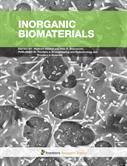Dublin Core
Title
Inorganic Biomaterials
Subject
Dentistry; Bioactive Glasses
Description
The intention of the editors A. R. Boccaccini and W. Höland has been to target this e-book to a broad readership and at the same time to present scientific contributions sufficiently detailed which discuss various specific fundamental aspects of inorganic biomaterials and their biomedical and dental applications. In this context, two large categories of biomaterials need to be mentioned, namely bioactive biomaterials for the replacement and regeneration of hard tissue and biocompatible, non-bioactive biomaterials for restorative dentistry. Both categories include products based on glasses or glass-ceramics as well as organic-inorganic composite materials. Among the bioactive products, BIOGLASS®, developed in the late 1960s by Prof. Dr. L. L. Hench, occupies a prominent position, being BIOGLASS® the first man-made material shown to form strong and functional bonding to leaving tissue. Sadly, Prof. Hench passed away in December 2015, at the time this e-book was being completed, it is therefore a great honor for the editors to dedicate this e-book to his memory. Indeed the book contains a comprehensive review written by Prof. Hench, in collaboration with Prof. J. R. Jones (UK), which provides a timely overview of the development and applications of bioactive glasses, including a discussion on the remaining challenges in the field. Further bioactive materials have been developed over the years by leading scientists such as Prof. Kokubo (Japan). These materials have also found their way into this book. The other contributions in this book, written by worldwide recognized experts in the field, present the latest advances in relevant areas such as scaffolds for bone tissue engineering, metallic ion releasing systems, cements, bioactive glass–polymer coatings, composites for bone regeneration, and effect of porosity on cellular response to bioceramics. In addition to bioactive materials, inorganic systems for restorative dentistry are also discussed in this e-book. Biomaterials for dental restorations consist of glassy or crystalline phases. Glass-ceramics represent a special group of inorganic biomaterials for dental restorations. Glass-ceramics are composed of at least one inorganic glassy phase and at least one crystalline phase. These products demonstrate a combination of properties, which include excellent aesthetics and the ability to mimic the optical properties of natural teeth, as well as high strength and toughness. They can be processed using special processing procedures, e.g. machining, moulding and sintering, to fabricate high quality products. The editors would like to extend their gratitude to the Frontiers team in Lausanne, Switzerland, for their outstanding dedication to make possible the publication of this e-book in a timely manner. It is our wish that the book will contribute to expand the field of inorganic biomaterials, both in terms of fundamental knowledge and applications, and that the book will be useful not only to established researchers but also to the increasing number of young scientists starting their careers in the field of inorganic biomaterials.
Creator
Wolfram Holand
Aldo R. Boccaccini
Aldo R. Boccaccini
Source
https://directory.doabooks.org/handle/20.500.12854/50306
Publisher
Frontiers Media SA
Date
2016
Contributor
Dwi Prihastuti
Rights
https://creativecommons.org/licenses/by/4.0/
Format
pdf
Language
English
Type
Textbooks
Identifier
DOI : 10.3389/978-2-88919-801-6

